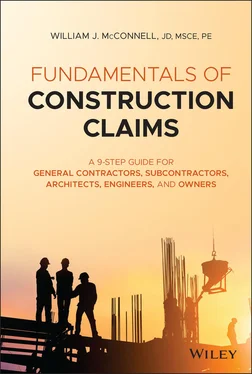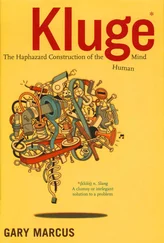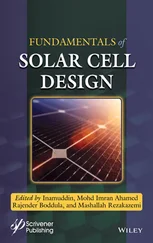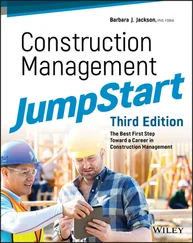Depending on the contract form, the dispute resolution process can be quick or lengthy in duration. If lengthy dispute resolution provisions are required and the claim value is relatively small, the claimant might not want to involve attorneys and expert consultants until the binding dispute resolution stage, particularly if the contract does not include a prevailing party provision that allows for the recovery of fees. If this is the case, the claimant might win the case, but lose the war because fees can wipe out most, if not all, of an award, and then some. Thus, claim administration involves cash flow forecasting and likely outcome predictions in order to properly manage settlement negotiations throughout the dispute resolution process.
Typical dispute resolution steps involve: (1) the claimant issues a notice of claim to the respondent; (2) the respondent renders a decision on the claim; (3) if the claimant finds that the respondent's position is unacceptable, the claimant triggers a non-binding dispute resolution, such as mediation; and (4) if the non-binding dispute resolution does not resolve the claim, the claimant moves forward with a binding dispute resolution. The timing and specifics for each of these steps vary from contract form to contract form, so it is imperative for the claimant to understand the dispute resolution procedures of the subject agreement.
Dispute resolution provisions also vary depending on the parties to the agreement, so owner–contractor agreements have dispute resolution terms that differ from contractor–subcontractor agreements, and both differ from the terms of owner–designer agreements. Note that the project delivery method used on a given project alters the duties and responsibilities of the parties, so it is important to know whether the delivery method is design-bid-build with a stipulated sum, design-bid-build with a guaranteed maximum price, construction manager for fee, construction manager at risk, design-build, engineer-procure-construct, integrated project delivery, etc.
The following sections review the dispute resolution provisions for various types of agreements.
I. Standard Contract Forms for Owner–Contractor Agreements
The following is a list of dispute resolution provisions for the three commonly used standard contract forms for owner–contractor agreements. Note that each form allows the parties to edit the contract before execution, so it is important to review the exact dispute resolution provisions within the subject contract.
A. AIA A201 General Conditions, Article 15, Claims and Disputes
The AIA was founded in 1857 and it is a professional organization for architects in the United States. The AIA's main design-bid-build contract forms between an owner and a contractor (AIA A101, A102, and A103 forms) all incorporate the AIA A201 General Conditions, which include the dispute resolution provisions for these contracts. The AIA's primary construction manager as constructor (CMc) contract forms (AIA A133 and A134) also incorporate the AIA A201 General Conditions. Article 15, “Claims and Disputes,” of the A201 offers the following dispute resolution steps:
The A201 designates the project architect as the “Initial Decision Maker,” unless otherwise noted in the agreement. The contractor or owner shall issue claims to the Initial Decision Maker for an initial decision on claims within 21 days after occurrence of the event giving rise to the claim or first recognition of the event giving rise to the claim.
The Initial Decision Maker shall review claims within 10 days of receipt and take one or more of the following actions: (1) request supporting data; (2) reject the claim in whole or in part; (3) approve the claim; (4) propose a compromise; or (5) advise the parties that it is unable to render a decision.
If the Initial Decision Maker does not render a decision within 30 days of claim submission, the claimant may demand mediation and binding dispute resolution without an initial decision.
If the Initial Decision Maker requests a party to answer questions or furnish additional supporting data, such party shall respond within 10 days upon receipt. Upon receipt of the response or supporting data, if any, the Initial Decision Maker will either reject or approve the claim in whole or in part [presumably within 10 days from receipt—the A201 does not list a specific duration here].
Either party may file for mediation of an initial decision at any time. Also, within 30 days of receipt of the initial decision, one party, which is typically the prevailing party of the initial decision, can demand in writing that the other party file for mediation of the initial decision. If such demand is made and the party receiving the demand fails with file for mediation within 30 days thereafter, then the initial decision becomes binding.
A party can file for binding dispute resolution concurrently with the filing for mediation. Binding resolution shall be stayed pending mediation for a period of 60 days, unless a longer period is agreed upon by the parties or court order.
Either party may, within 30 days from the date that mediation has been concluded without resolution or 60 days after mediation has been demanded without resolution, demand in writing that the other party file for binding dispute resolution. If such a demand is made and the party receiving the demand fails to file for binding dispute resolution within 60 days after receipt, then both parties waive their rights to binding dispute resolution and the initial decision becomes binding.
The claim is resolved via binding dispute resolution.
B. ConsensusDocs 200, Standard Agreement and General Conditions Between Owner and Constructor
ConsensusDocs was founded in 2007 by a coalition of architecture-engineering-construction (AEC) organizations. ConsensusDocs' owner–contractor contract forms integrate general terms and general conditions into one document. The dispute resolutions provisions for ConsensusDocs' general contracting series are as follows:
In the event the project personnel from the contractor and owner cannot resolve a dispute, direct discussions should be conducted between the parties' representatives that possess the necessary authority to resolve the matter.
If the parties' representatives are not able to resolve the matter within 5 business days of the first discussion, the parties' representatives shall inform senior executives of the parties that resolution could not be reached.
Upon receipt of such notice, the senior executives of the parties shall meet within 5 business days to endeavor to resolve the matter. If the dispute remains unresolved after 15 business days from the date of the date of the first discussion, the parties shall submit the matter to dispute mitigation, if applicable, and dispute resolution procedures.
The optional non-binding dispute mitigation procedures can either be a project neutral or a dispute review board. The project neutral or dispute review board shall issue nonbinding findings within 5 business days of a referral. If the matter remains unresolved after the findings, the parties shall submit the matter to binding dispute resolution.
If direct discussions do not result in resolution and no dispute mitigation procedure is selected, the parties shall endeavor to resolve the matter by mediation. Mediation shall be convened within 30 business days of the matter first being discussed and shall conclude within 45 business days of the matter first being discussed. Either party may terminate the mediation at any time after the first session by written notice to the non-terminating party and mediator.
The matter is resolved via binding dispute resolution.
C. C-700, Standard General Conditions of the Construction Contract (2018 Version)
Читать дальше












